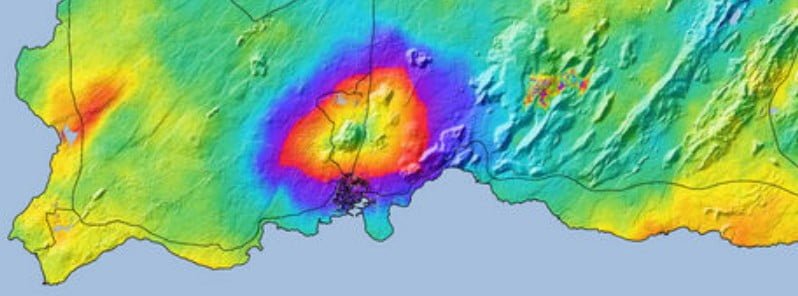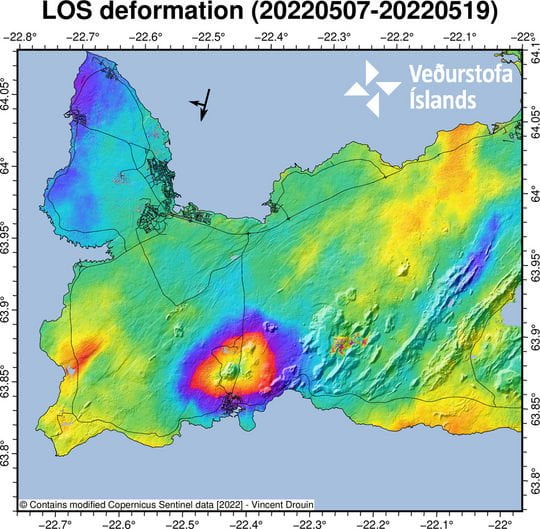Earthquake swarm in the Reykjanes Peninsula, uplift around Svartsengi up to 2.5 cm, Iceland

Earthquake activity continues in the Reykjanes/Svartsengi volcanic system, with around 370 earthquakes detected on May 19, 2022.
According to data acquired by Sentinel-1 from May 7 to 19, uplift is taking place around Svartsengi between 2 and 2.5 cm (0.8 – 1 inches).
The seismicity is located at a depth between 4 and 6 km (2.5 – 3.7 miles).
The Icelandic Met Office (IMO) specialists said landslides can occur on slopes and mountainsides. Caution is advised for people in those areas.

In light of the increased seismic activity and the ongoing deformation in the Reykjanes/Svartsengi volcanic system, the Aviation Color Code was raised from Green to Yellow on May 15.
Additionally, the Civil Protection Department of Iceland elevated its alert level to Uncertainty level.
Geological summary
The Reykjanes volcanic system at the SW tip of the Reykjanes Peninsula, where the Mid-Atlantic Ridge rises above sea level, comprises a broad area of postglacial basaltic crater rows and small shield volcanoes.
The submarine Reykjaneshryggur volcanic system is contiguous with and is considered part of the Reykjanes volcanic system, which is the westernmost of a series of four closely-spaced en-echelon fissure systems that extend diagonally across the Reykjanes Peninsula.
Most of the subaerial part of the system (also known as the Reykjanes/Svartsengi volcanic system) is covered by Holocene lavas.
Subaerial eruptions have occurred in historical time during the 13th century at several locations on the NE-SW-trending fissure system, and numerous submarine eruptions dating back to the 12th century have been observed during historical time, some of which have formed ephemeral islands.
Basaltic rocks of probable Holocene age have been recovered during dredging operations, and tephra deposits from earlier Holocene eruptions are preserved on the nearby Reykjanes Peninsula.
This volcano is located within the Reykjanes, a UNESCO Global Geopark property.2
References:
1 New data clearly shows the rise that is taking place – IMO – May 19, 2022
2 Reykjanes – Geological summary – GVP
Featured image credit: Uplift at Svartsengi, Reykjanes May 7 to 19, 2022. Credit: IMO, Copernicus EU/Sentinel-1

Commenting rules and guidelines
We value the thoughts and opinions of our readers and welcome healthy discussions on our website. In order to maintain a respectful and positive community, we ask that all commenters follow these rules.